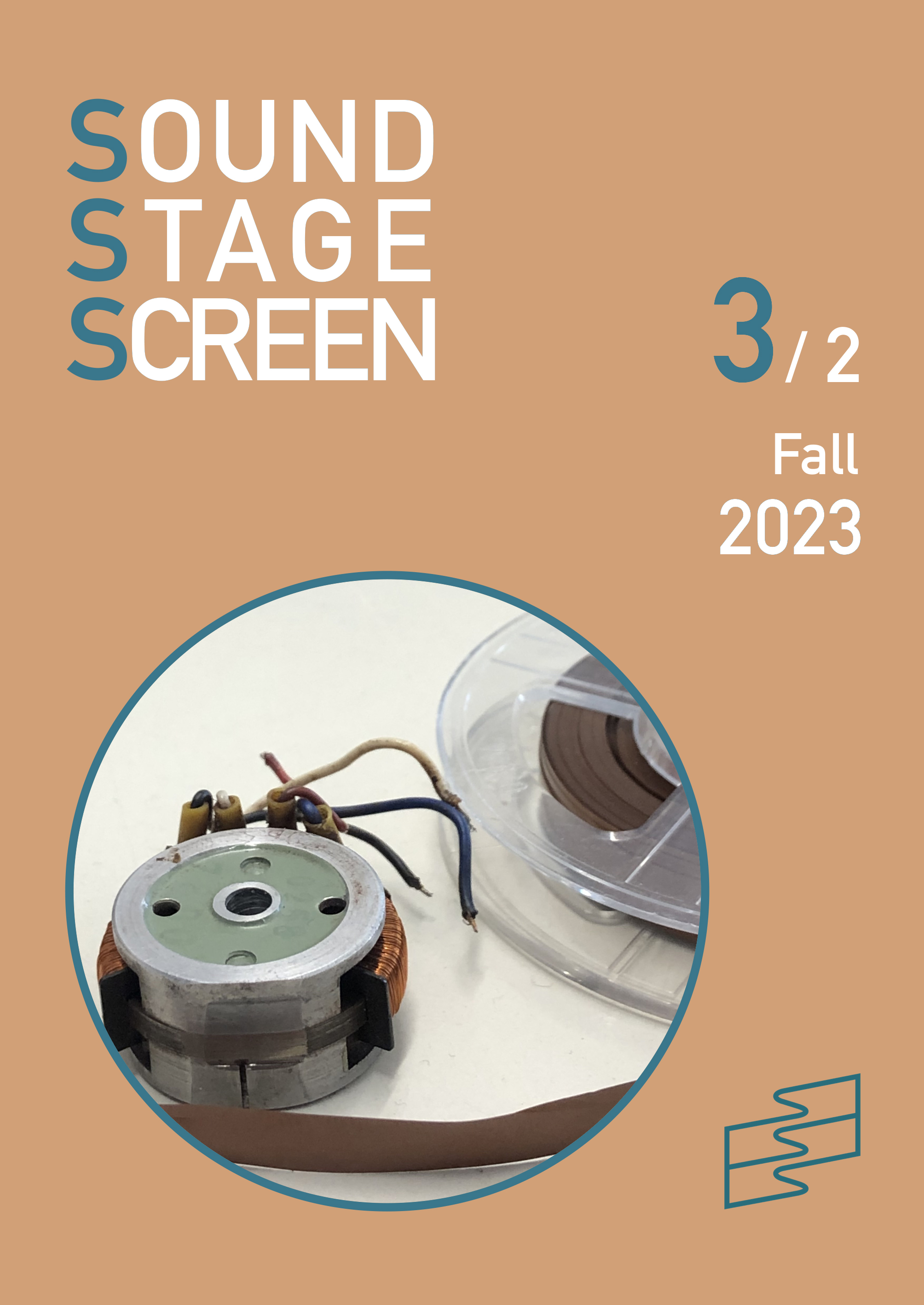Abstract
Broadcasted for the first time in 1975, Orfeo 9 is a film musical written and directed by Tito Schipa Jr. and produced for television by Rai, the Italian state broadcaster. The first Italian rock opera to appear on the TV screen, it is a modern version of the myth of Orpheus. Adapted from the theatrical musical staged in 1970 in Rome, the film is primarily a remediation of the double LP released in 1973: it was in fact built on the pre-existing audio recording, thus becoming the first experiment of “visualized soundtrack” on Italian television, according to critic Renato Marengo’s definition. Accordingly, this presentation reverses the common perspective that considers what pop music can bring to cinema, asking instead what the language of film can bring to a record.
In particular, I focus on the ways in which the film Orfeo 9 contributed to the “shaping of the experience of song,” to quote film scholar Claudio Bisoni. I discuss the modalities of the “musical re-writing of the image” (Simone Arcagni) that allowed Schipa to experiment with different relationships between audio and video through the medium of cinema. The issue of genre, in particular the American film musical, plays a significant part in my analysis. My overall intention is to show how the film Orfeo 9 was an experiment that aimed at a synthesis between different possibilities of remediation of songs.
References
Altman, Rick. The American Film Musical. Bloomington: Indiana University Press, 1987.
———. Film/Genre. London: British Film Institute, 1999.
Arcagni, Simone. Dopo Carosello. Il musical cinematografico italiano. Alessandria: Falsopiano, 2006.
Bisoni, Claudio. Cinema, sorrisi e canzoni: Il film musicale italiano degli anni Sessanta. Soveria Mannelli: Rubbettino, 2020.
Bratus, Alessandro and Maurizio Corbella. “This Must Be the Stage: Staging Popular Music Performance in Italian Media Practices around ’68.” Cinéma & Cie 19, no. 31 (Fall 2018): 31–50.
Chion, Michel. Audio-Vision: Sound on Screen. Translated by Claudia Gorbman. New York: Columbia University Press, 1994.
Donnelly, K. J. “Visualizing Live Albums: Progressive Rock and the British Concert Film in the 1970s.” In The Music Documentary: Acid Rock to Electropop, edited by Robert Edgar, Kirsty Fairclough-Isaacs, and Benjamin Halligan, 171–82. New York: Routledge, 2013.
Feuer, Jane. The Hollywood Musical. 2nd ed. Bloomington: Indiana University Press, 1993.
Follero, Daniele, and Donato Zoppo. Opera Rock. La storia del concept album. Milano: Hoepli, 2018.
Frith, Simon. Performing Rites: On the Value of Popular Music. Cambridge, MA: Harvard University Press, 1998.
Hubbert, Julie. “The Compilation Soundtrack from the 1960s to the Present.” In The Oxford Handbook of Film Music Studies, edited by David Neumeyer, 291–318. Oxford: Oxford University Press, 2014.
Johnson, Jake, Masi Asare, Amy Coddington, Daniel Goldmark, Raymond Knapp, Oliver Wang, and Elizabeth Wollman. “Divided by a Common Language: Musical Theater and Popular Music Studies.” Journal of Popular Music Studies 31, no. 4 (2019): 32–50.
Knapp, Raymond. The American Musical and the Performance of Personal Identity. Princeton, NJ: Princeton University Press, 2006.
———. “Performance, Authenticity, and the Reflexive Idealism of the American Musical.” In Identities and Audiences in the Musical: An Oxford Handbook of the American Musical, Volume 3, edited by Raymond Knapp, Mitchell Morris, and Stacy Wolf, 199–222. Oxford: Oxford University Press, 2018.
Locatelli, Massimo. “Il catalogo musicale pop e il cinema delle emozioni. Il caso Yuppi Du (1975).” Schermi 4, no. 7 (2020): 47–71.
Marengo, Renato. “Pop in Tv: il mito di Orfeo.” Ciao 2001 5, no. 47 (1973): 62.
McMillin, Scott. The Musical as Drama. Princeton, NJ: Princeton University Press, 2006.
Miceli, Sergio. Musica per film. Storia, estetica, analisi, tipologie. Lucca: LIM, 2009.
Penner, Nina. “Rethinking the Diegetic/Nondiegetic Distinction in the Film Musical.” Music and the Moving Image 10, no. 3 (2017): 3–20.
Pruvost, Céline. “Orfeo 9, de Tito Schipa Jr.: une réécriture polymorphe du mythe.” Cahiers d’études romanes, no. 27 (2013): 259–79.
Reddick, George. “The Evolution of the Original Cast Album.” In Media and Performance in the Musical: An Oxford Handbook of the American Musical, Volume 2, edited by Raymond Knapp, Mitchell Morris, and Stacy Wolf, 101–23. Oxford: Oxford University Press, 2018.
Rockwell, John. Rock opera. In Grove Music Online, Oxford Music Online, 2002. https://doi.org/10.1093/gmo/9781561592630.article.O008572.
Sanden, Paul. Liveness in Modern Music: Musicians, Technology, and the Perception of Performance. New York: Routledge, 2013.
Schipa Jr., Tito. Orfeo 9, Un’opera pop. Roma: Freebook, 2013.
———. Orfeo 9 – Then an Alley. Nella storia di due spettacoli musicali, una via alla rifondazione italiana dell’opera popolare. Lecce: Argo, 2017.
“ORFEO 9 di Tito Schipa Jr. (1972).” Orfeo 9 Ufficiale. Uploaded on January 31, 2022. https://youtu.be/sGcdjYBN2ls.
Schipa Jr., Tito, Daniele Peraro, and Alessandro Avallone. “Alumni LeviLive, Musica e Mito, 9 novembre 2022.” Fondazione Ugo e Olga Levi. Streamed live on November 9, 2022. https://www.youtube.com/watch?v=hONuYoEWXVU&t=889s.
Shuker, Roy. Popular Music: The Key Concepts. London: Routledge, 1998.
Tomatis, Jacopo. Storia culturale della canzone italiana. Milano: Il Saggiatore, 2019.
Wollman, Elizabeth Lara. The Theater Will Rock: A History of the Rock Musical, from Hair to Hedwig. Ann Arbor: University of Michigan Press, 2006.
Womack, Kenneth, and Todd F. Davis. Reading the Beatles: Cultural Studies, Literary Criticism, and the Fab Four. Albany: State University of New York Press, 2006.
Wood, Graham. “Why Do They Start to Sing and Dance All of a Sudden? Examining the Film Musical.” In The Cambridge Companion to the Musical, 2nd ed., edited by William A. Everett and Paul R. Laird, 303–24. Cambridge: Cambridge University Press, 2008.

This work is licensed under a Creative Commons Attribution-ShareAlike 4.0 International License.
Copyright (c) 2024 Daniele Peraro

